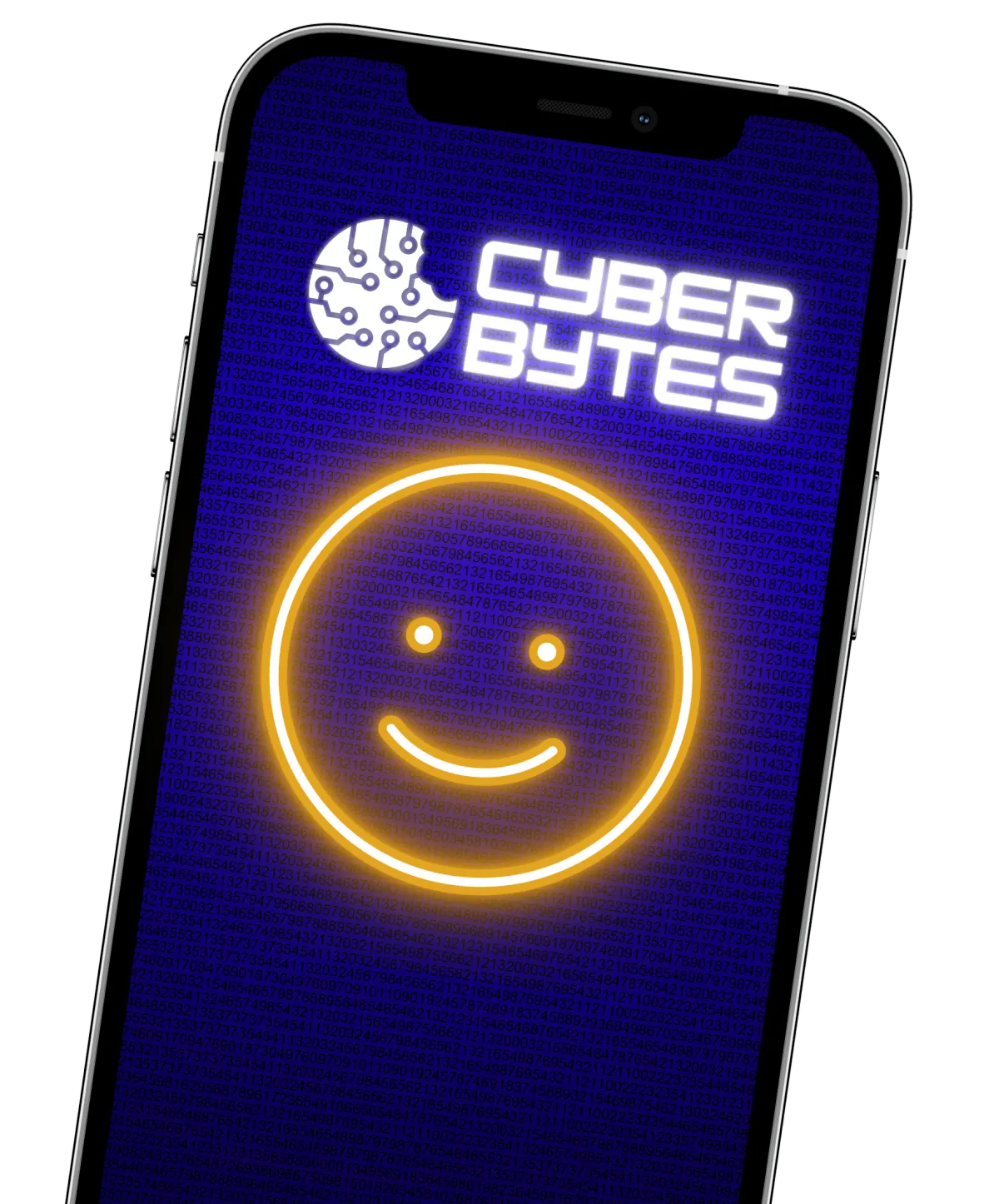You are what you click!
Learn how to make cybersecurity your way of life in an easy and guided way.
You are what you click!
Become Cyber savvy
EXPLORE BLOG BELOW
You are what you click!
Become Cyber savvy
You are what you click!
Become Cyber savvy
You are what you click!
Become Cyber savvy

Mindful Browsing: A Shield for Your Digital and Mental Wellbeing
In our increasingly digital world, it can feel like we’re constantly connected, overwhelmed by distractions, and losing control over how we spend our time and attention online. This 24/7 hyper-connectivity can take a toll on our mental health and wellbeing. That’s why more and more experts, including myself as an IT and Cybersecurity professional with over 25 years of experience and also a mindfulness teacher, are recommending mindfulness as an essential skill for protecting our minds while navigating the digital landscape.
Having spent decades in the technology industry, I’ve witnessed firsthand the mounting stresses and loss of control caused by our ever-connected digital lives. Both professionally and personally, I’ve learned how unmindful browsing habits can undermine security, productivity, relationships and wellbeing. I call it being in “fullmindness” which is the opposite of mindfulness.
What does Mindfulness mean?
Mindfulness means maintaining present-moment awareness with an attitude of openness, curiosity, and care. Practicing mindfulness online enhances our ability to focus, make intentional choices about where we direct our attention, and take back control over our digital lives. Developing mindfulness can provide a shield to protect both our digital security and mental wellbeing.
The Risks of Fullmindness Browsing
Most of us engage in fullmindness browsing every day, clicking, scrolling and switching between apps and sites without full awareness. We get so accustomed to these behaviors that they become automatic habits. Danger arises when these habits lead us down unwanted rabbit holes, expose us to things that negatively impact our self-image and worldview, or result in oversharing information online.

Fullmindness browsing can:
Cause distraction and inability to focus or be fully present with others
Lead to wasted time and regret about how we choose to spend our precious attention
Expose us to increased ads, clickbait, misinformation and “brain junk food”
Result in impulsive posts, comments or searches we later come to regret
Cause anxiety, depression or other mental health issues
Enable cyberbullying, predators, and other malicious actors to take advantage through manipulation
I recall a day when my friend’s niece, Rachel, a vivacious teenager addicted to her smartphone, came rushing to me distressed about a post she regretted sharing. It wasn’t the content of the post that was concerning; it was the aftermath — the unsolicited messages and the anxiety that followed. It made me realize that while technology has given us incredible tools, it also presents new challenges. This event underscores the essential nature of a Mindful Online practice.
Furthermore, practicing mindfulness while browsing can protect against hackers, scammers, and Cybermonsters and other online risks, helping us use technology intentionally rather than letting it use us.

Mindful Digital Citizenship
Mindful digital citizenship means being an aware, ethical and empowered participant in the online world. It involves developing skills like:
Presence – Paying full attention to our actual needs and interests moment-to-moment, rather than unconsciously responding to external triggers. Before clicking, scrolling or typing, we can pause and ask “Is this in line with my deeper values?”
Focus – Practicing single-tasking and avoiding distractions and interruptions, carving out tech-free time to immerse ourselves fully in life offline.
Wisdom – Evaluating online information carefully for truth, quality and positivity before passing it on or letting it influence our perspectives.
Empathy – Considering the humanity of others online as we read their words and decide how to respond. Sharing in ways that spread compassion not harm.
Moderation – Being disciplined about not overindulging in unwholesome content or excessive digital stimulation. Setting healthy limits aligned with our goals.
Protection – Learning cybersecurity and cyber safety simple best practices and implementing steps like strong meaningful passwords, 2-factor authentication and malware protection to shield our devices and accounts from being compromised.
Cultivating these mindful skills online aligns with the Be I AM model – being Intentional, Aware, and Mindful with each digital action.
How to Put Mindfulness Into Practice Online
Cultivating mindful browsing takes commitment, but even small steps can make a difference. Here are some simple ways to get started:
Set Healthy Intentions – Before going online, clarify your values to make mindful choices later. Below are my Top Ten recommendations and practices I do!
Designate Tech-Free Zones/Times – Protect spaces by keeping devices out during activities like family dinners.
Use Mindful Reminders – Set prompts to check if you’re being intentional, aware and mindful throughout the day. I have stickers in every piece of technology I use.
Practice Cybersecurity and Cyber Safety Basics – Use strong unique passwords and 2-factor authentication and continue your education. If you haven’t read the Happily Ever Cyber book series, I invite you to check it out because it is an amazing book to give you the basics while keeping you engaged and inspired. Go to https://cyber.sandraestok.com/bundle
Limit Notifications – Reduce distractions by turning off non-essential alerts.
Focus on Quality Over Quantity – Spend time on sites that uplift rather than depress you.
Ask “Why?” – Understand your motivation before checking phones or social media.
Meditate – Brief mindfulness sessions can center you before browsing.
Practice Kindness – Share online compassionately, send at least one positive message to a friend or family member every day.
Unplug Consciously – Disengage mindfully rather than compulsively when you need a digital detox.
Leverage Tools Mindfully – Use apps and extensions designed to enhance focus and awareness. Check permissions and clean up apps to keep your privacy.

The Benefits of Mindful Digital Citizenship
With consistent practice, mindful digital habits aligned with the Be I AM model create tangible benefits:
Increased ability to concentrate by minimizing digital distractions
More empowered choice over how you spend your time online
Reduced impulsive, risky or regretful browsing and posting behaviors
Greater resilience against misinformation, manipulation and toxicity
Improved self-image from less comparison and negativity online
Enhanced presence, focus and offline relationships
Overall improved mental health and wellbeing from conscious digital consumption
Becoming a mindful digital citizen takes commitment, but the rewards are immense. With mindfulness as your online shield, you can navigate the digital world safely and serenely.
What Be I AM steps will you take today to become a more mindful digital citizen? How will you safeguard your mental wellbeing online?

FAQ’s
What is the connection between mindfulness and online protection?
Mindfulness involves being present and fully engaged in the current moment, without judgment. In the context of online protection, mindfulness helps individuals become more aware of their actions, reactions, and surroundings in the digital realm. By practicing mindfulness, users can become more discerning about the content they engage with, the links they click on, and the personal information they share, reducing the risk of potential cyber threats.
How can mindfulness help reduce online stress and anxiety?
The digital world, with its constant influx of information and notifications, can be overwhelming. Mindfulness aids in filtering out unnecessary noise and focuses on the present task, leading to reduced digital distractions. By practicing mindfulness, individuals can become more discerning about which notifications to address immediately and which to ignore. This selective attention can reduce the anxiety and stress that comes from feeling the need to be “always on” and responsive.
Are there specific mindfulness exercises for improving online safety?
Yes, there are mindfulness exercises tailored to online safety:
Digital Breath Awareness: Before logging in or opening an app, take three deep breaths. This centers the mind and prepares it for a more focused online experience.
Mindful Browsing: Challenge yourself to single-task. When online, focus only on one activity at a time, whether it’s reading an article, checking emails, or engaging in social media. This reduces the chance of mindlessly clicking on potentially harmful links.
Reflective Pausing: Before sharing personal information, posting, or downloading, take a moment to reflect. Ask yourself: “Is this safe? Do I trust this source? What are the potential implications?”Can mindfulness practices improve digital habits and reduce screen time addiction?
Absolutely! Mindfulness encourages individuals to be more aware of their habits, including digital ones. By regularly checking in with oneself and reflecting on screen time, users can identify patterns of overuse or mindless scrolling. Setting mindful intentions, like dedicating specific times for disconnection or using technology for meaningful tasks, can help break the cycle of screen time addiction.
What are five practical tips for incorporating mindfulness into our online lives?
Set Clear Intentions: Before you go online, define a clear purpose for that session.
Limit Notifications: Reduce digital distractions by turning off non-essential notifications.
Digital Detox Rituals: Dedicate specific times in your day or week where you disconnect completely.
Engage Fully: When using technology, do so wholeheartedly. Listen attentively during virtual meetings, read articles without skimming, and be present during online interactions.
Mindful Check-ins: Periodically throughout the day, pause and assess how you’re feeling. If you notice signs of digital fatigue, take a short break. Use the Be I AM. Be Intentional, Aware, and Mindful model.
Live Happily Ever Cyber!

Sandra Estok
Subscribe for more ways to protect what matters most to you against hackers, scammers, and Cybermonsters™
Latest blog posts:

Mindful Browsing: A Shield for Your Digital and Mental Wellbeing
In our increasingly digital world, it can feel like we’re constantly connected, overwhelmed by distractions, and losing control over how we spend our time and attention online. This 24/7 hyper-connectivity can take a toll on our mental health and wellbeing. That’s why more and more experts, including myself as an IT and Cybersecurity professional with over 25 years of experience and also a mindfulness teacher, are recommending mindfulness as an essential skill for protecting our minds while navigating the digital landscape.
Having spent decades in the technology industry, I’ve witnessed firsthand the mounting stresses and loss of control caused by our ever-connected digital lives. Both professionally and personally, I’ve learned how unmindful browsing habits can undermine security, productivity, relationships and wellbeing. I call it being in “fullmindness” which is the opposite of mindfulness.
What does Mindfulness mean?
Mindfulness means maintaining present-moment awareness with an attitude of openness, curiosity, and care. Practicing mindfulness online enhances our ability to focus, make intentional choices about where we direct our attention, and take back control over our digital lives. Developing mindfulness can provide a shield to protect both our digital security and mental wellbeing.
The Risks of Fullmindness Browsing
Most of us engage in fullmindness browsing every day, clicking, scrolling and switching between apps and sites without full awareness. We get so accustomed to these behaviors that they become automatic habits. Danger arises when these habits lead us down unwanted rabbit holes, expose us to things that negatively impact our self-image and worldview, or result in oversharing information online.

Fullmindness browsing can:
Cause distraction and inability to focus or be fully present with others
Lead to wasted time and regret about how we choose to spend our precious attention
Expose us to increased ads, clickbait, misinformation and “brain junk food”
Result in impulsive posts, comments or searches we later come to regret
Cause anxiety, depression or other mental health issues
Enable cyberbullying, predators, and other malicious actors to take advantage through manipulation
I recall a day when my friend’s niece, Rachel, a vivacious teenager addicted to her smartphone, came rushing to me distressed about a post she regretted sharing. It wasn’t the content of the post that was concerning; it was the aftermath — the unsolicited messages and the anxiety that followed. It made me realize that while technology has given us incredible tools, it also presents new challenges. This event underscores the essential nature of a Mindful Online practice.
Furthermore, practicing mindfulness while browsing can protect against hackers, scammers, and Cybermonsters and other online risks, helping us use technology intentionally rather than letting it use us.

Mindful Digital Citizenship
Mindful digital citizenship means being an aware, ethical and empowered participant in the online world. It involves developing skills like:
Presence – Paying full attention to our actual needs and interests moment-to-moment, rather than unconsciously responding to external triggers. Before clicking, scrolling or typing, we can pause and ask “Is this in line with my deeper values?”
Focus – Practicing single-tasking and avoiding distractions and interruptions, carving out tech-free time to immerse ourselves fully in life offline.
Wisdom – Evaluating online information carefully for truth, quality and positivity before passing it on or letting it influence our perspectives.
Empathy – Considering the humanity of others online as we read their words and decide how to respond. Sharing in ways that spread compassion not harm.
Moderation – Being disciplined about not overindulging in unwholesome content or excessive digital stimulation. Setting healthy limits aligned with our goals.
Protection – Learning cybersecurity and cyber safety simple best practices and implementing steps like strong meaningful passwords, 2-factor authentication and malware protection to shield our devices and accounts from being compromised.
Cultivating these mindful skills online aligns with the Be I AM model – being Intentional, Aware, and Mindful with each digital action.
How to Put Mindfulness Into Practice Online
Cultivating mindful browsing takes commitment, but even small steps can make a difference. Here are some simple ways to get started:
Set Healthy Intentions – Before going online, clarify your values to make mindful choices later. Below are my Top Ten recommendations and practices I do!
Designate Tech-Free Zones/Times – Protect spaces by keeping devices out during activities like family dinners.
Use Mindful Reminders – Set prompts to check if you’re being intentional, aware and mindful throughout the day. I have stickers in every piece of technology I use.
Practice Cybersecurity and Cyber Safety Basics – Use strong unique passwords and 2-factor authentication and continue your education. If you haven’t read the Happily Ever Cyber book series, I invite you to check it out because it is an amazing book to give you the basics while keeping you engaged and inspired. Go to https://cyber.sandraestok.com/bundle
Limit Notifications – Reduce distractions by turning off non-essential alerts.
Focus on Quality Over Quantity – Spend time on sites that uplift rather than depress you.
Ask “Why?” – Understand your motivation before checking phones or social media.
Meditate – Brief mindfulness sessions can center you before browsing.
Practice Kindness – Share online compassionately, send at least one positive message to a friend or family member every day.
Unplug Consciously – Disengage mindfully rather than compulsively when you need a digital detox.
Leverage Tools Mindfully – Use apps and extensions designed to enhance focus and awareness. Check permissions and clean up apps to keep your privacy.

The Benefits of Mindful Digital Citizenship
With consistent practice, mindful digital habits aligned with the Be I AM model create tangible benefits:
Increased ability to concentrate by minimizing digital distractions
More empowered choice over how you spend your time online
Reduced impulsive, risky or regretful browsing and posting behaviors
Greater resilience against misinformation, manipulation and toxicity
Improved self-image from less comparison and negativity online
Enhanced presence, focus and offline relationships
Overall improved mental health and wellbeing from conscious digital consumption
Becoming a mindful digital citizen takes commitment, but the rewards are immense. With mindfulness as your online shield, you can navigate the digital world safely and serenely.
What Be I AM steps will you take today to become a more mindful digital citizen? How will you safeguard your mental wellbeing online?

FAQ’s
What is the connection between mindfulness and online protection?
Mindfulness involves being present and fully engaged in the current moment, without judgment. In the context of online protection, mindfulness helps individuals become more aware of their actions, reactions, and surroundings in the digital realm. By practicing mindfulness, users can become more discerning about the content they engage with, the links they click on, and the personal information they share, reducing the risk of potential cyber threats.
How can mindfulness help reduce online stress and anxiety?
The digital world, with its constant influx of information and notifications, can be overwhelming. Mindfulness aids in filtering out unnecessary noise and focuses on the present task, leading to reduced digital distractions. By practicing mindfulness, individuals can become more discerning about which notifications to address immediately and which to ignore. This selective attention can reduce the anxiety and stress that comes from feeling the need to be “always on” and responsive.
Are there specific mindfulness exercises for improving online safety?
Yes, there are mindfulness exercises tailored to online safety:
Digital Breath Awareness: Before logging in or opening an app, take three deep breaths. This centers the mind and prepares it for a more focused online experience.
Mindful Browsing: Challenge yourself to single-task. When online, focus only on one activity at a time, whether it’s reading an article, checking emails, or engaging in social media. This reduces the chance of mindlessly clicking on potentially harmful links.
Reflective Pausing: Before sharing personal information, posting, or downloading, take a moment to reflect. Ask yourself: “Is this safe? Do I trust this source? What are the potential implications?”Can mindfulness practices improve digital habits and reduce screen time addiction?
Absolutely! Mindfulness encourages individuals to be more aware of their habits, including digital ones. By regularly checking in with oneself and reflecting on screen time, users can identify patterns of overuse or mindless scrolling. Setting mindful intentions, like dedicating specific times for disconnection or using technology for meaningful tasks, can help break the cycle of screen time addiction.
What are five practical tips for incorporating mindfulness into our online lives?
Set Clear Intentions: Before you go online, define a clear purpose for that session.
Limit Notifications: Reduce digital distractions by turning off non-essential notifications.
Digital Detox Rituals: Dedicate specific times in your day or week where you disconnect completely.
Engage Fully: When using technology, do so wholeheartedly. Listen attentively during virtual meetings, read articles without skimming, and be present during online interactions.
Mindful Check-ins: Periodically throughout the day, pause and assess how you’re feeling. If you notice signs of digital fatigue, take a short break. Use the Be I AM. Be Intentional, Aware, and Mindful model.
Live Happily Ever Cyber!

Sandra Estok
Subscribe for more ways to protect what matters most to you against hackers, scammers, and Cybermonsters™
Stop Hackers, Scammers and Cybermonsters in their tracks.
Take charge of your Cyber Life today!
Push Cybermonsters away from your private data.
Subscribe to my newsletter about cybersecurity and cyber safety. New issues every Tuesday.




